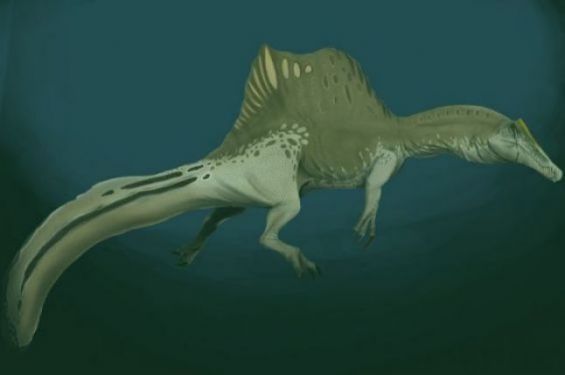A new study recently published in the journal Cretaceous Research brings additional evidence about one of the beasts that once lived in Morocco. The paper reveals that more than 95 million years ago, a river in the Moroccan Sahara was home to the Spinosaurus.
According to the study conducted by Thomas Beevora, Aaron Quigleya, Roy E. Smith, Robert SH Smyth, Nizar Ibrahim, Samir Zouhric and David M. Martilla, the predator lived mostly in the river.
Analyzing conical teeth at two sites in southeastern Morocco, the researchers were able to bring further evidence, proving that this dinosaur led an aquatic lifestyle.

«The remarkably high abundance of spinosaur teeth compared to remains of terrestrial dinosaurs, and even some aquatic animals strongly supports Spinosaurus being a largely aquatic animal spending much of its life in water where its teeth were shed and preserved», the researchers argue.
The study says that during reconnaissance field work near Tarda, in the northern Tafilelt of south east Morocco, researchers discovered a bone bed at the foot of a sandstone channel that had been exploited by local fossil diggers. «Many large blocks of indurated sandstone lay around the abandoned diggings and all were rich in the teeth of Spinosaurus, rostral ‘teeth’ of the sawfish Onchopristis», the researchers wrote.
Spinosaurus, an avid swimmer
Only 1.5 km away from the first one, they found an active mine site and met with a number of artisan fossil miners. «One of us purchased all of the fossils that a digger had obtained and put into a large sack (total number of elements = 1261)», the group of researchers wrote.

«Remarkably, Spinosaurus teeth were only slightly less numerous than the most common elements of the dental assemblage, the rostral denticles of the sawfish Onchopristis numidus», they said.
«The enhanced abundance ofSpinosaurusteeth relative to other dinosaurs is likely a reflection of their aquatic lifestyle. An animal living much of its life in water is much more likely to contribute teeth to the river deposit than those dinosaurs that perhaps only visit the river for drinking and more casual feeding on its banks, or the occasional carcass of a terrestrial dinosaur decomposing in the river».
The findings of the new study and discovery back a previous one that was published in April. The study was titled «Tail-propelled aquatic locomotion in a theropod dinosaur», was conducted by a group of international researchers and headed by Moroccan paleontologist at the University of Detroit Mercy Nizar Ibrahim. It indicated that the dinosaur’s morphology is behind its aquatic abilities.





 chargement...
chargement...













